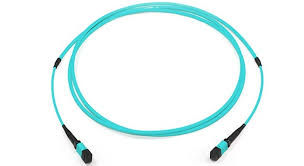HOME NETWORK CABLES
- Shannon Oberholtzer
- May 1, 2020
- 3 min read

It is a costly procedure to set up a home system since you have to buy all the related gadgets (switch, modem, router, Ethernet links, etc.) and buy a contract of an expert to set up the home run cables. Be that as it may, remember that there is no such thing as the ideal home system—what works for you will depend entirely on your individual needs and the gadgets you use. Now and then, we get to hear from individuals who intend to install home network cables like Cat5E or Cat6 cables in a home system, yet they don't realize what Ethernet cable will work for them and what they can manage without. Thus, to help you with that this blog offers the Ethernet cable buying advice to enable you to run Ethernet cable with all the equipment:
Category:
This is the most vital thing to consider because Ethernet categories can have levels of interference and a wide range of speeds. The alternatives you're for the most part liable to see are Cat5E (the 'E' represents enhanced), Cat6 and Cat7. As you may have speculated, higher numbers will, in general, low quicker speeds. Cat5E is evaluated for 1Gbps and data transmissions of 100MHz, Cat6 presents to 10Gbps at up to 250MHz transfer speed, and Cat7 can go as high as 100Gbps with data transfer capacities up to 600 MHz. The other significant distinction is that Cat7 links are protected continuously, which lessens impedance and cross-talk. Cat6 links are now and again protected, however, retailers aren't clear when they are and aren't, and Cat5E never have any shielding.
Length:
After category, length is the second most vital component of an Ethernet cable. It is quite understandable that the length of the cable will affect the speed and performance of the cable.Speeds can drop off over a longer distance, particularly with the latest cables - for instance, that Cat7 speed of 100Gbps is just up to the scope of 15m, while a Cat5E keeps up its most remarkable speed for up to 100m.All things considered, any normal customer isn't probably going to link anything anywhere above 100m, and even 15m is presumably longer considering that it is just a requirement for home network cabling, so we wouldn’t stress over this excessively - only attempt to abstain from purchasing a 50m cable when you just need it to extend over one room.
Style:
Finally, one little thing: many Ethernet cables are accessible in a flat structure. This may knock up the cost somewhat, yet could be well justified, but it could be the right decision if you are planning to put them under doorways. Both the Cat5E links and Cat6 links are accessible for your home system, yet the best Ethernet cable must be the one that meets the present and foreseen Internet speeds at the least expense. Remember that Cat6A link costs essentially more than Cat5E link and that installation requires more care and takes longer. Nonetheless, if the prerequisite is for ultra-quick Internet and the separation between switches surpasses 108 feet doubtlessly that the best link is a Cat6A. Be that as it may, if the cable lengths are short, or the association speed doesn't surpass 1 Gbps, a Cat5E link is an excellent decision because of its lower cost, dynamic development, and less demanding installation. Even though Cat7 cables may offer prevalent execution, the extra expense doesn't warrant their utilization unless for very specialized home network cabling.
TechnaCable is known for its best, high-quality and affordable cables for your Home and office networks. Contact us, and we can recommend you the best cables for your use, needs and according to the distance bearing the cost in mind. Contact us today!






Comments